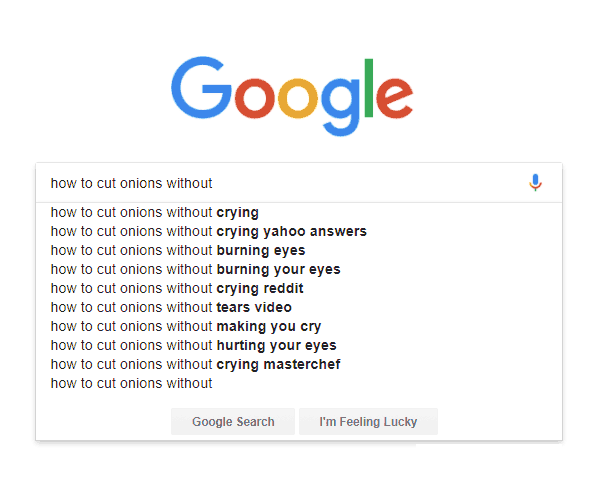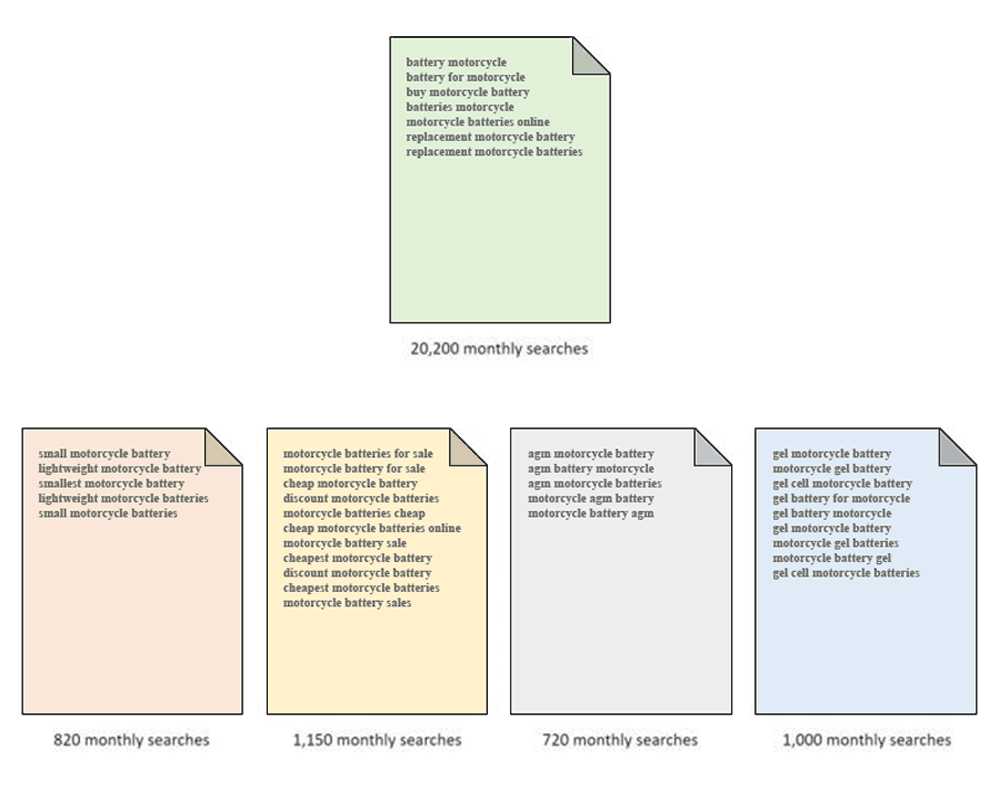For a newly-created website that has just went online, or for low-authority websites that have been around for a while, ranking high for high-volume short-tail keyword can be difficult.
So here, the fastest way to do it, is by aiming for low-hanging fruit of keywords.
Not that you should spend your time and money to rank best at those specific keywords, what you need to do is to make that low-hanging fruit keywords to pave your way to more competitive phrases.
Here you need to understand that searches are unique. Google said that it's having an increased number of search queries that have never been used before. What this means, Google is seeing unique keywords every time. You have to aim for long-tail keywords that are truly unique, to target a very specific audience.
For example, "how to cut onions without crying" and "how to cut onions tear-free".

Notice that these two terms are unique, but according to Google, they're actually similar.
So not that Google is seeing "unique" queries every time, the more exact is that Google is seeing new combinations of keywords.
It’s only the particular query string itself that’s unique, not necessarily the sentiment behind it.
This is where your optimization starts. You need to do thorough research for keywords, and tap into their potential.
Optimize those low-hanging fruits to gain an upper advantages to the competition.
But the thing is that, there are hundreds, or even thousands of keywords that represent different things searchers what to know about one single topic.
Look at the list, and it's easy to say that it's almost impossible to optimize your website to rank well for those relevant keywords.
For that reason, you need to segment your targeted keywords (low-hanging ones) into groups, with each group representing a similar intention. Remember that a good SEO strategy and usability should intentions, and they require a unique page of content to satisfy the searcher's needs.
Let's take an example for this.

The green group is easily optimized. As for the rest, we can see that the total monthly search volume they represent is only a fraction of the green group. This is just a small sample. If you improvise with more variant of keywords, you can get close to the 20,200 keywords in the green group.
Here is where you break your short-trail keywords into related groups with long-tail keywords for targeting. The key is not to focus on the short tail exclusively, but rather to use the long tail to build up relevance for the short tail.
To do this, find all the keywords in a given topic that have similar meanings, and group them together. Then you need to find or create a page optimized for those keywords.
Remember that words come with synonyms or similar meanings. For example, "cheap" is similar or can be related to "discount", "clearance", "sale", "closeouts" and "surplus".
What this means, they all can be optimized together. Add your keywords and the text link to the short-tail optimized page, then do it with other keywords of similar intent. Do this again and again.
While this is indeed a lot of work, the result can be seen only when you have patience. Only with patience you can have realistic expectations. Optimizing a dozen long-tail phrases won't automatically get you traction on the short-tail phrase you really want. But you can build an authority to all of those pages.
When optimizing long-tail keywords to achieve short-tail keywords, you should see that traffic will build up along the way. Even less frequently searched of long-tail phrases can add up to 50 to 100 percent of the traffic you'll get from the short-tail phrases.
This is why long-tail keywords are crucial to your strategy and SEO. While they may drive less traffic per term, but in total, they are certainly able to drive just as much traffic.
Related: Rank Higher With The Best Keywords That Matches Your Contents